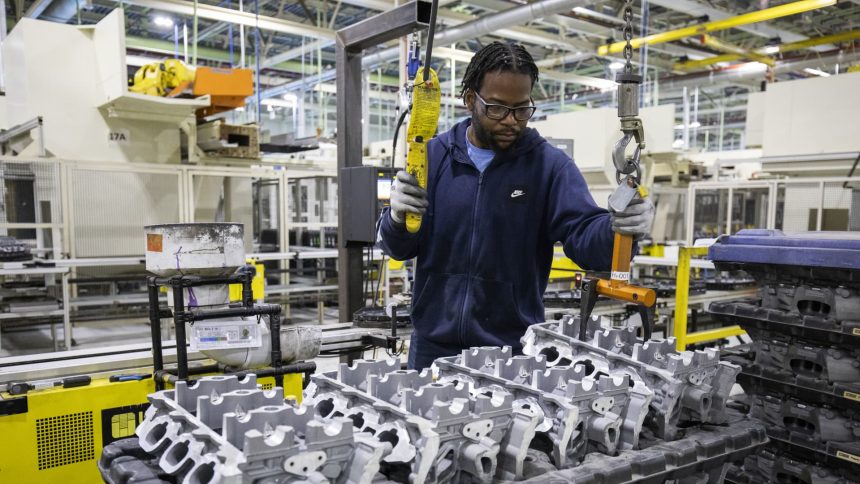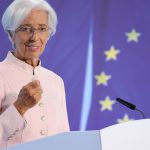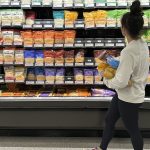The U.S. economy grew even faster than expected in the third quarter, buoyed by a strong consumer in spite of higher interest rates, ongoing inflation pressures, and a variety of other domestic and global headwinds.
Gross domestic product, a measure of all goods and services produced in the U.S., rose at a seasonally adjusted 4.9% annualized pace in the July-through-September period, up from an unrevised 2.1% pace in the second quarter, the Commerce Department reported Thursday.. Economists surveyed by Dow Jones had been looking for a 4.7% acceleration in GDP, which also is adjusted for inflation.
The sharp increase came due to contributions from consumer spending, increased inventories, exports, residential investment and government spending.
Consumer spending, as measured by personal consumption expenditures, increased 4% for the quarter after rising just 0.8% in Q2. Gross private domestic investment surged 8.4% and government spending and investment jumped 4.6%.
Spending at the consumer level split fairly evenly between goods and services, with the two measures up 4.8% and 3.6%, respectively.
The GDP increase marked the biggest gain since the fourth quarter of 2021.
Markets reacted little to the news, with stock market futures negative heading into the open and Treasury yields mostly lower.
While the report could give the Federal Reserve some impetus to keep policy tight, traders were still pricing in no chance of an interest rate hike when the central bank meets next week, according to CME Group data. Futures pricing pointed to just a 27% chance of an increase at the December meeting following the GDP release.
“Investors should not be surprised that the consumer was spending in the final months of the summer,” said Jeffrey Roach, chief economist at LPL Financial. “The real question is if the trend can continue in the coming quarters, and we think not.”
In other economic news Thursday, the Labor Department reported that jobless claims totaled 210,000 for the week ended Oct. 21, up 10,000 from the previous period and slightly ahead of the Dow Jones estimate for 207,000. Also, durable goods orders increased 4.7% in September, well ahead of the 0.1% gain in August and the 2% forecast, according to the Commerce Department.
At a time when many economists had thought the U.S. would be in the midst of at least a shallow recession, growth has kept pace due to consumer spending that has exceeded all expectations. The consumer was responsible for about 68% of GDP in Q3.
While the U.S. has proven resilient to the various challenges, most economists expect growth to slow considerably in the coming months. However, they generally think the U.S. can skirt a recession absent any other unforeseen shocks.
“The bottom line for the Federal Reserve is that no recession is in sight, and policymakers can be content in the knowledge that they can keep interest rates higher for longer, without triggering a meltdown in the U.S. economy,” said Matthew Ryan, head of market strategy at Ebury, a global financial services firm. “We don’t think that this impressive GDP data will be enough to encourage the Fed to deliver another rate increase, though we do at least believe that the first cut is a long way off.”
Even with Covid-era government transfer payments running out, spending has been strong as households draw down savings and ramp up credit card balances. The personal saving rate declined to 3.8% in the third quarter, compared to 5.2% in the previous period.
The GDP gains also come despite the Federal Reserve not only raising rates at the fastest clip since the early 1980s but also vowing to keep rates high until inflation comes back to acceptable levels. Price increases have been running well ahead of the central bank’s 2% annual target, though the rate of inflation at least has ebbed in recent months.
The chain-weighted price index, which takes into accounts changes in consumer shopping patterns to gauge inflation, rose 3.5% for the quarter, up from 1.7% in Q2 and higher than the Dow Jones estimate for 2.5%.
Along with rates and inflation, consumers have been dealing with a variety of other issues.
The resumption of student loan payments is expected to take a bite out of household budgets, while elevated gas prices and a wobbly stock market are hitting confidence levels. Geopolitical tensions also pose potential headaches, with fighting between Israel and Hamas and the war in Ukraine posing substantial uncertainties about the future.
Don’t miss these CNBC PRO stories:
Read the full article here




